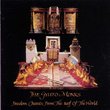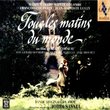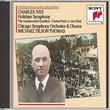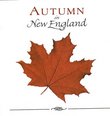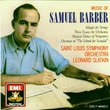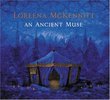| All Artists: Deryck Cooke, Georg Solti, Wiener Philharmoniker, Anita Valkki, Berit Lindholm, Birgit Nilsson, Brigitte Fassbaender, Christa Ludwig, Claire Watson, Claudia Hellmann, Dame Gwyneth Jones, Dietrich Fischer-Dieskau, Eberhard Wächter, George London, Gerhard Stolze, Gottlob Frick, Grace Hoffmann, Gustav Neidlinger, Hans Hotter, Helen Watts, Helga Dernesch, Hetty Plumacher, Ira Malaniuk, James King, Jean Madeira, Joan Sutherland, Kirsten Flagstad, Kurt Böhme, Lucia Popp, Marga Höffgen, Marilyn Tyler, Maureen Guy, Oda Balsborg, Paul Kuen, Régine Crespin, Set Svanholm, Vera Little, Vera Schlosser, Waldemar Kmentt, Walter Kreppel, Vienna Philharmonic Orchestra Title: An Introduction to Der Ring des Nibelungen Members Wishing: 0 Total Copies: 0 Label: Decca Release Date: 9/13/2005 Genres: Special Interest, Classical Styles: Opera & Classical Vocal, Chamber Music, Historical Periods, Classical (c.1770-1830), Modern, 20th, & 21st Century Number of Discs: 2 SwapaCD Credits: 2 UPC: 028944358124 |
Search - Deryck Cooke, Georg Solti, Wiener Philharmoniker :: An Introduction to Der Ring des Nibelungen
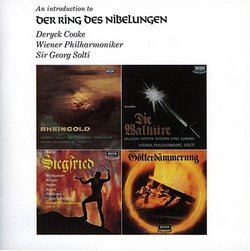 | Deryck Cooke, Georg Solti, Wiener Philharmoniker An Introduction to Der Ring des Nibelungen Genres: Special Interest, Classical
No Description Available No Track Information Available Media Type: CD Artist: WAGNER,R. Title: INTRO TO Street Release Date: 09/13/2005 |
Larger Image |
CD DetailsSynopsis
Product Description No Description Available No Track Information Available Media Type: CD Artist: WAGNER,R. Title: INTRO TO Street Release Date: 09/13/2005 Similarly Requested CDs
|
CD ReviewsGreat Exposition of the Music of Wagner's Ring Dan Sherman | Alexandria, VA USA | 04/23/2002 (5 out of 5 stars) "This is a wonderful 2-CD set in which musicologist Deryck Cooke lays out the few basic musical themes of the Ring Cycle and gives a very clear exposition of how Wagner develops them over the course of the Cycle. This approach really added to my appreciation of the Ring Cycle and also Wagner's genius in developing and blending his themes. For me the highlight of the disk comes at the end when he presents 2 great orchestral passages from the Ring -- the Prelude to Act III of Siegfried and the very end of Gotterdammerung. After a quick review of the relevant themes, he uses these 2 excerpts to illustrate how multiple themes are brought together and really give us the ideal of "music-drama." This is a great set that anyone interested in the Ring should have; it really adds to the appreciation of the music of the Ring. This is an item that needs six stars to rate!A good companion to these CDs is the Ring Disc software which has a full recording of the Solti Ring on 1 CD (!) and has the feature of identifying musical themes as they are played, with a "click-here" approach to following them through the score. This really brings the sort of analysis Cooke gives to each single moment of the Ring." Excellent Introduction R. Albin | Ann Arbor, Michigan United States | 03/22/2004 (5 out of 5 stars) "Wagner's Ring Cycle is arguably the most complex musical work in existence. This CD set is a commentary on and explication of Wagner's basic method in constructing the Ring Cycle. This set was originally a BBC broadcast aimed at educating a broad audience. Cooke's explanations are lucid and organized well. This set is accessible to any interested individual of any level of musical sophistication. Wagner's basic method was to develop an extensive set of musical themes, leitmotivs, associated with important characters, plot elements, objects, and motivations in the Ring Cycle, The leitmotivs are esthetically and psychologically appropriate to the things to which they are associated. The leitmotivs exist in families with many derived from a basic set of themes that reify the underlying intellectual and psychological themes of the plot. Cooke explicates a large number of leitmotivs and shows how they are related and transformed in the course of the action of the Ring cycle. He concludes with a number of examples demonstrating how Wagner combined leitmotivs in musical actions that parallel the action of the plot and reflect the underlying themes of the Ring Cycle. This gives a nice introduction to the remarkably complex architecture of the Ring cycle. Beyond its pedagogical intent, Cooke's presentation is also a nice introduction to Wagner's incredible achievement in matching the formal architecture of the music, the dramatic action, his presentation of the underlying themes, and all in powerful and often wonderful music." A very useful Musical-Thematic analysis. R. Albin | 05/10/1999 (5 out of 5 stars) "This set analyses the motifs used in the Ring and especially emphasizes their inter-relationships. It describes "families" of related motifs, and also shows how certain themes are altered as the work as a whole progresses. It is the most useful preparation for listening to or seeing the Ringthat I know, short of a study of the score itself, but it requires no technical musical knowledge or ability to read music."
|

 Track Listings (20) - Disc #1
Track Listings (20) - Disc #1